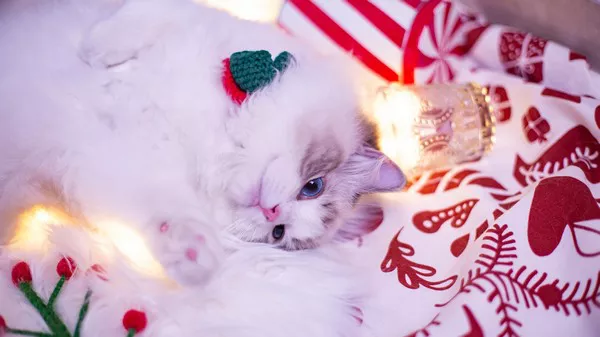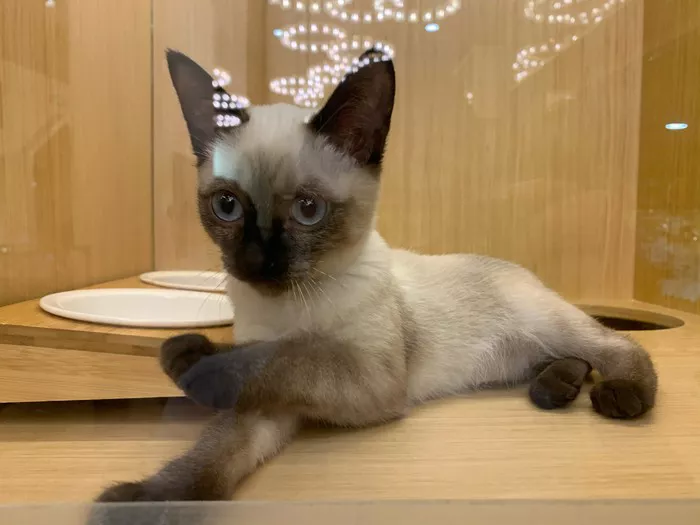The enchanting allure of Ragdoll cats, with their striking blue eyes, semi-longhair coats, and gentle disposition, has made them a sought-after breed among cat enthusiasts. As responsible cat breeders and owners navigate the world of feline reproduction, questions often arise about the optimal breeding frequency for Ragdoll cats. In this article, we will explore the considerations surrounding the breeding limits of Ragdoll cats and the factors that influence these decisions.
Understanding the Ragdoll Breed:
Ragdoll cats, known for their docile nature and distinctive color patterns, have specific characteristics that contribute to their popularity. Originating in the 1960s, Ragdolls are a relatively new breed known for their placid temperament, striking blue eyes, and semi-longhair coats that come in various colorpoint and mitted patterns.
As with any cat breed, responsible breeding practices are essential to ensure the health and well-being of the cats and the preservation of breed standards. Ragdoll cats, in particular, are recognized for their large size, silky fur, and colorpoint markings, making them a unique and captivating breed within the feline world.
Factors Influencing Breeding Frequency:
Age of the Cat:
The age of a Ragdoll cat plays a crucial role in determining how often they can be bred. Like all living beings, cats go through various life stages, and the reproductive capabilities of a cat may change over time. It is generally recommended to breed Ragdoll cats during their prime reproductive years, typically between the ages of 1 to 7 years.
Health Status:
The health of the cat is paramount when considering breeding frequency. Cats with pre-existing health conditions may not be suitable candidates for breeding, and it is crucial to prioritize their well-being over reproductive goals. Regular veterinary check-ups and health screenings are essential to ensure that breeding cats are in optimal health.
Reproductive History:
A Ragdoll cat’s reproductive history can influence breeding frequency. If a cat has previously experienced complications during pregnancy or birthing, it may be advisable to limit the number of subsequent breeding attempts. Monitoring the cat’s reproductive health and addressing any issues promptly is essential.
Stress and Environmental Factors:
Cats are sensitive creatures, and stress can have a significant impact on their reproductive health. Frequent breeding or environmental stressors can lead to anxiety, affecting a cat’s overall well-being and reproductive capabilities. Providing a calm and stable environment is crucial for successful breeding.
Breeder’s Goals and Ethics:
Responsible breeders adhere to ethical practices that prioritize the health and welfare of the cats. Breeding solely for profit without considering the physical and emotional well-being of the cats is not in line with responsible breeding standards. A breeder’s goals, ethical stance, and commitment to the breed’s standards should guide decisions on breeding frequency.
Limits on Breeding Ragdoll Cats:
While there is no hard-and-fast rule on the exact number of times a Ragdoll cat can be bred, it is generally recommended to approach breeding with careful consideration and responsibility. Most reputable cat breeding organizations, including breed registries and veterinary associations, advocate for responsible breeding practices that prioritize the welfare of the cats.
Physical Toll on the Female:
Female cats, known as queens, undergo physical and hormonal changes during pregnancy and nursing. Frequent breeding can place a significant toll on their bodies, leading to potential health issues such as nutritional depletion and exhaustion. Limiting the number of litters a queen has can help mitigate these concerns.
Preventing Overpopulation:
Responsible breeding practices also consider the broader issue of feline overpopulation. The goal is not only to produce healthy and well-adjusted kittens but also to contribute to the well-being of the overall feline population. Breeding excessively without regard for overpopulation can contribute to the challenges faced by animal shelters and rescue organizations.
Genetic Diversity:
Maintaining genetic diversity within a breed is crucial for preventing the emergence of hereditary health issues. Responsible breeders carefully plan pairings to ensure genetic diversity and avoid the potential negative consequences of inbreeding. Overbreeding a particular queen may compromise these efforts.
Breeder’s Reputation:
The reputation of a breeder is often built on the quality of the cats they produce and the ethical standards they uphold. Breeding a Ragdoll cat too frequently, especially without proper care and consideration, can negatively impact a breeder’s reputation within the feline community.
Considerations for Responsible Breeding:
Health Screening:
Before considering breeding, Ragdoll cats should undergo thorough health screenings. This includes genetic testing for hereditary conditions prevalent in the breed, as well as general health checks to assess the cat’s overall well-being.
Nutritional Care:
Providing optimal nutrition is crucial for breeding cats. Queens should be in excellent physical condition before breeding, and they should receive a balanced and nutritious diet throughout pregnancy and nursing. Consultation with a veterinarian is essential to determine the best dietary plan.
Reproductive Health Monitoring:
Regular monitoring of a queen’s reproductive health is vital. This includes observing estrus cycles, tracking fertility, and addressing any reproductive issues promptly. A breeder should be well-versed in recognizing signs of heat and be prepared for the responsibilities associated with pregnancy and birthing.
Stress Management:
Minimizing stress is essential for successful breeding. Queens should have a quiet and comfortable space for pregnancy and nursing, free from unnecessary disruptions. Additionally, introducing new breeding pairs gradually can help reduce stress and facilitate successful pairings.
Conclusion:
In conclusion, while there is no fixed limit on how many times a Ragdoll cat can be bred, responsible breeding practices emphasize the health, well-being, and ethical treatment of the cats involved. Cat owners and breeders should prioritize the physical and emotional health of the cats over reproductive goals. Breeding Ragdoll cats requires a commitment to ethical standards, responsible practices, and the overall betterment of the breed.
It is recommended that breeders work closely with veterinarians, stay informed about the latest developments in feline health, and actively participate in the feline community to exchange knowledge and experiences. By approaching breeding with a sense of responsibility and a deep understanding of the breed’s needs, breeders can contribute to the preservation and enhancement of the Ragdoll cat breed, ensuring a legacy of healthy and well-adjusted felines.

























